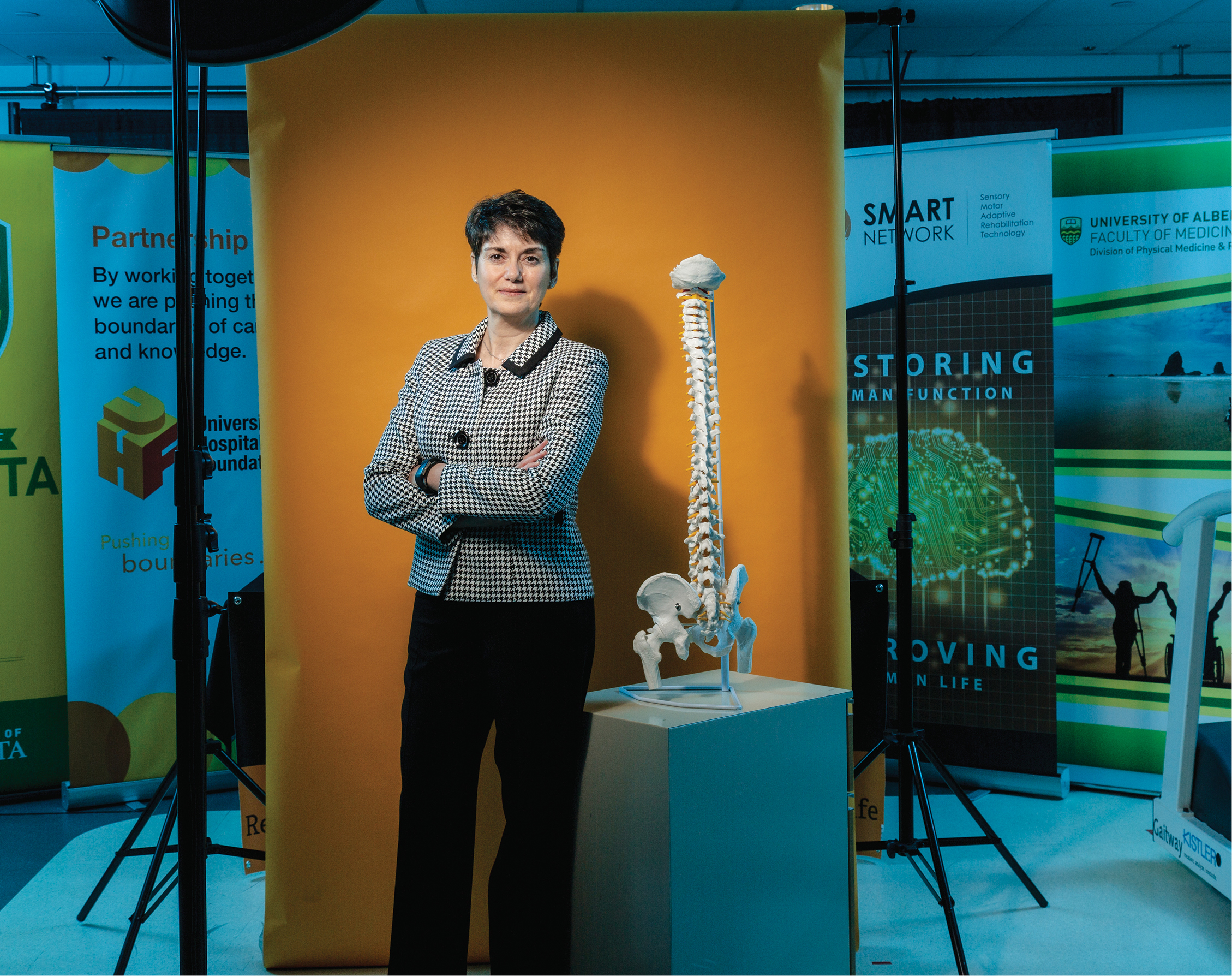
Biomedical engineering researcher and NMHI member Vivian Mushahwar.
Photo: Laughing Dog Photography
Thanks to work in mapping the spinal cord, and an electrical spinal implant pioneered in the laboratory of University of Alberta professor Vivian Mushahwar, the dream of helping patients with paralysis walk again could be reality within a decade.
Mushahwar's research, published in Scientific Reports, focuses on using a tiny spinal implant to restore lower-body function after severe injuries. Hair-like electrical wires plunge deep into the spinal grey matter, sending electrical signals to trigger the networks that already know how to do the hard work.
Supported by the University Hospital Foundation, her team has also created maps of which parts of the spinal cord trigger the hip, knees, ankles and toes, and the areas that put movements together.
Being able to control standing and walking would improve bone health, improve bowel and bladder function, and reduce pressure ulcers. It could help treat cardiovascular disease-the main cause of death for spinal cord patients-while bolstering mental health and quality of life.
"Imagine the future," Mushahwar says. "A person just thinks of wanting to walk and commands are transmitted to the spinal cord. They stand up and walk. This is the dream."
Vivian Mushahwar, PhD, is a professor in the Department of Medicine and adjunct professor with the Neuroscience and Mental Health Institute, Canada Research Chair in Functional Restoration and director of the SMART Network.